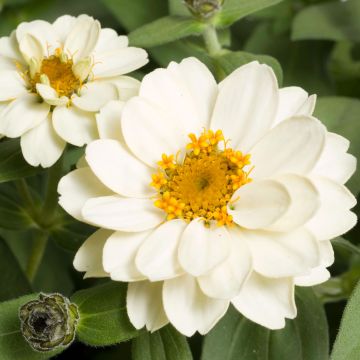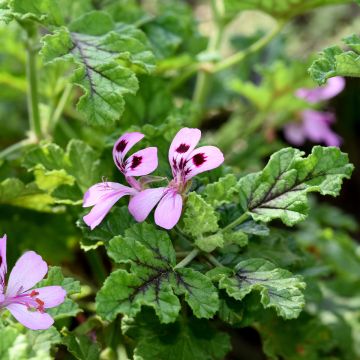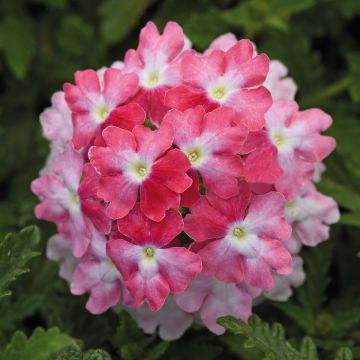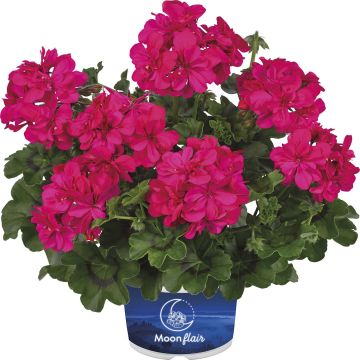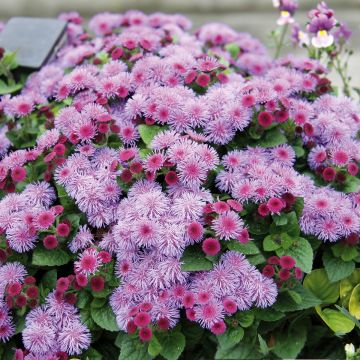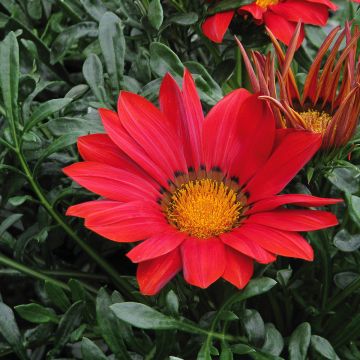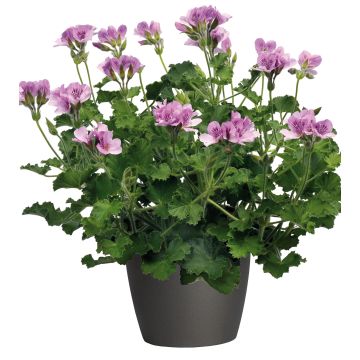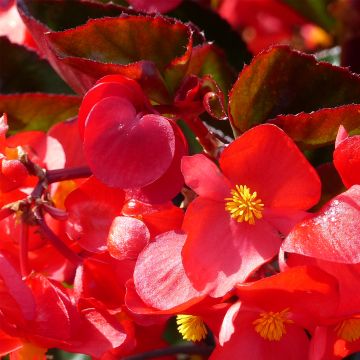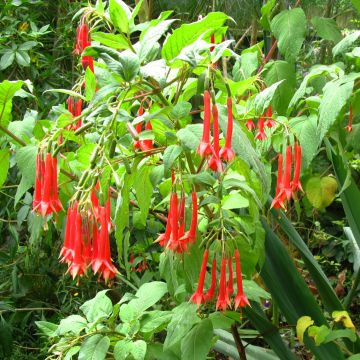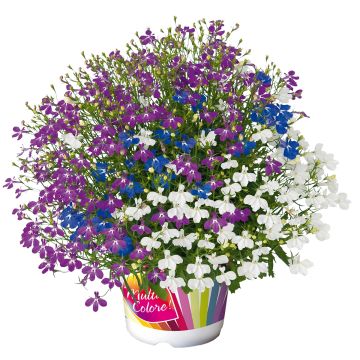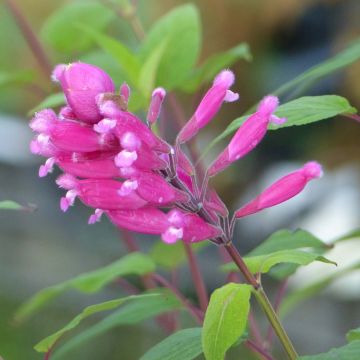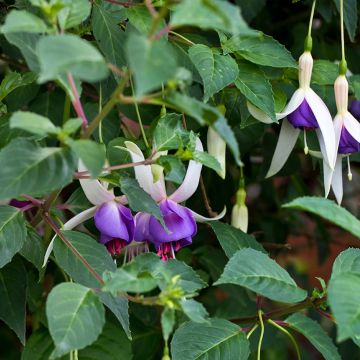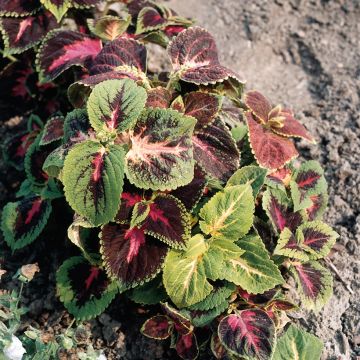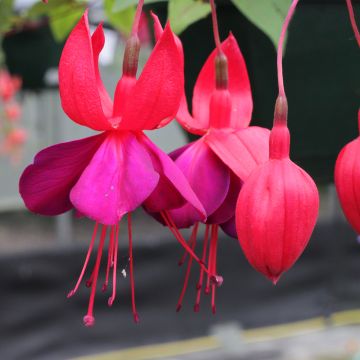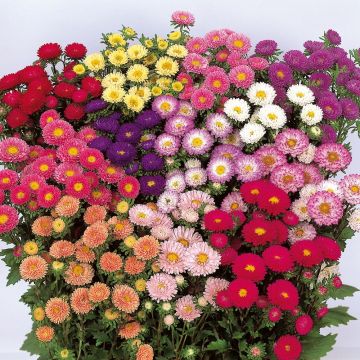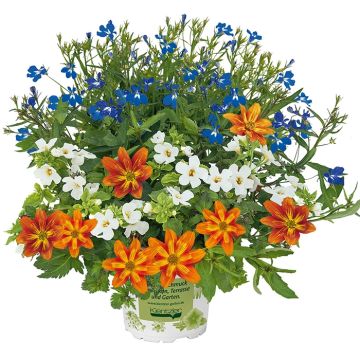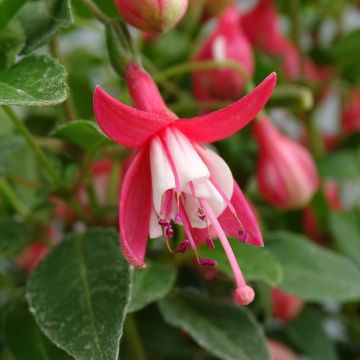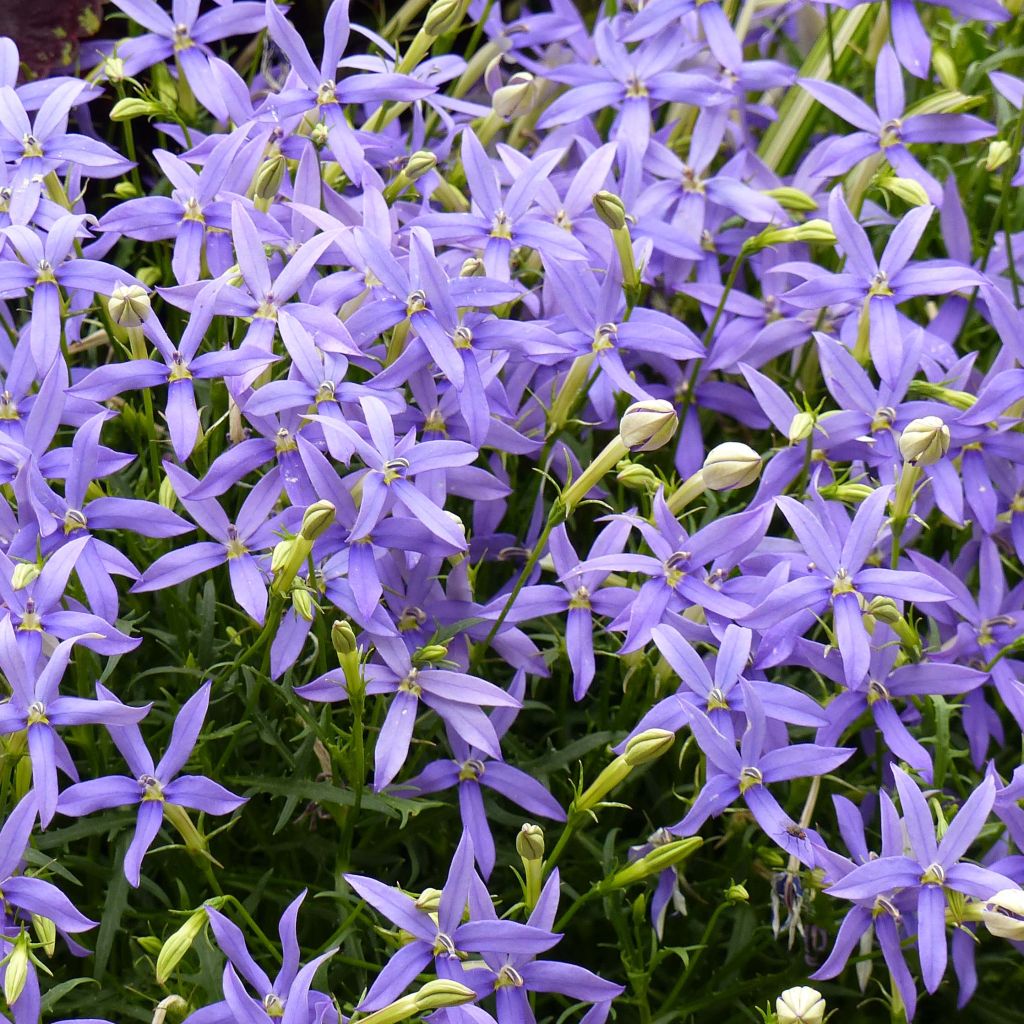

Laurentia ou Isotoma Beth's Blue minimottes
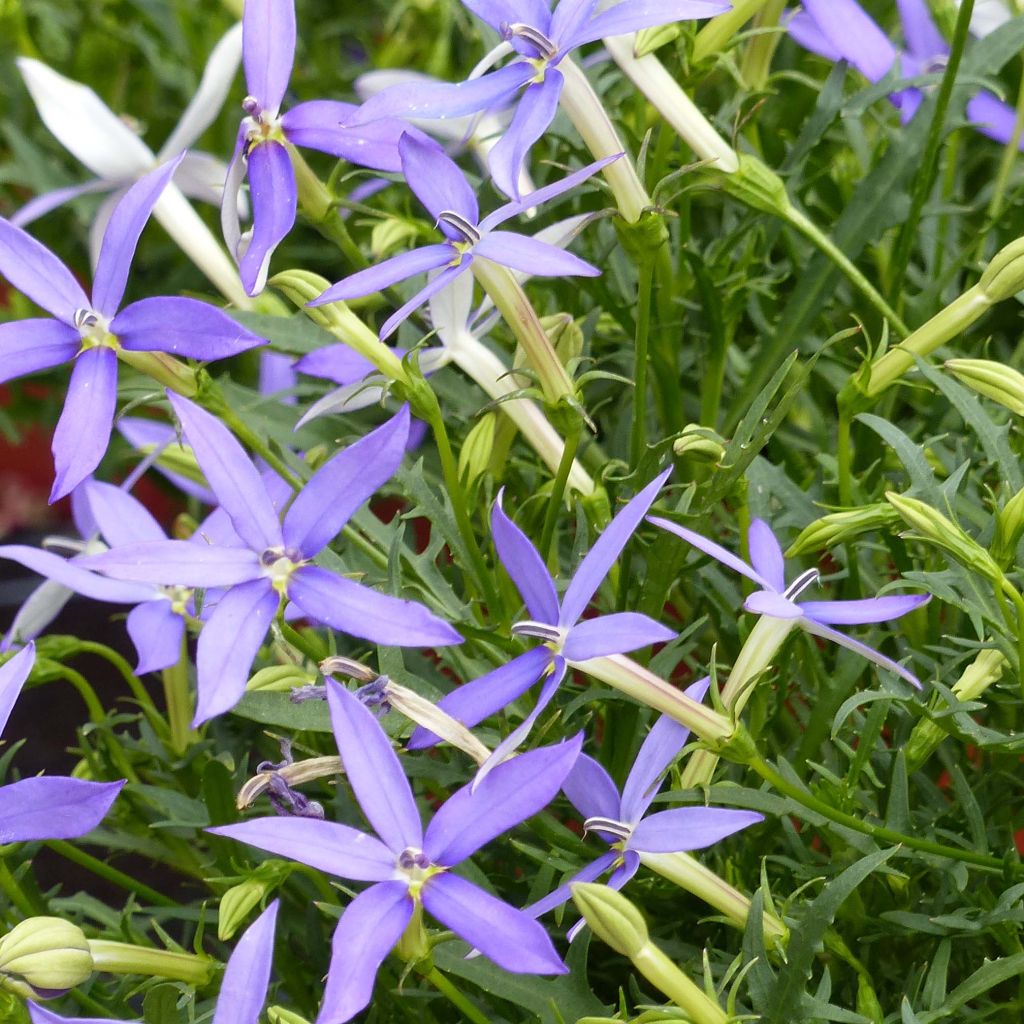

Laurentia ou Isotoma Beth's Blue minimottes
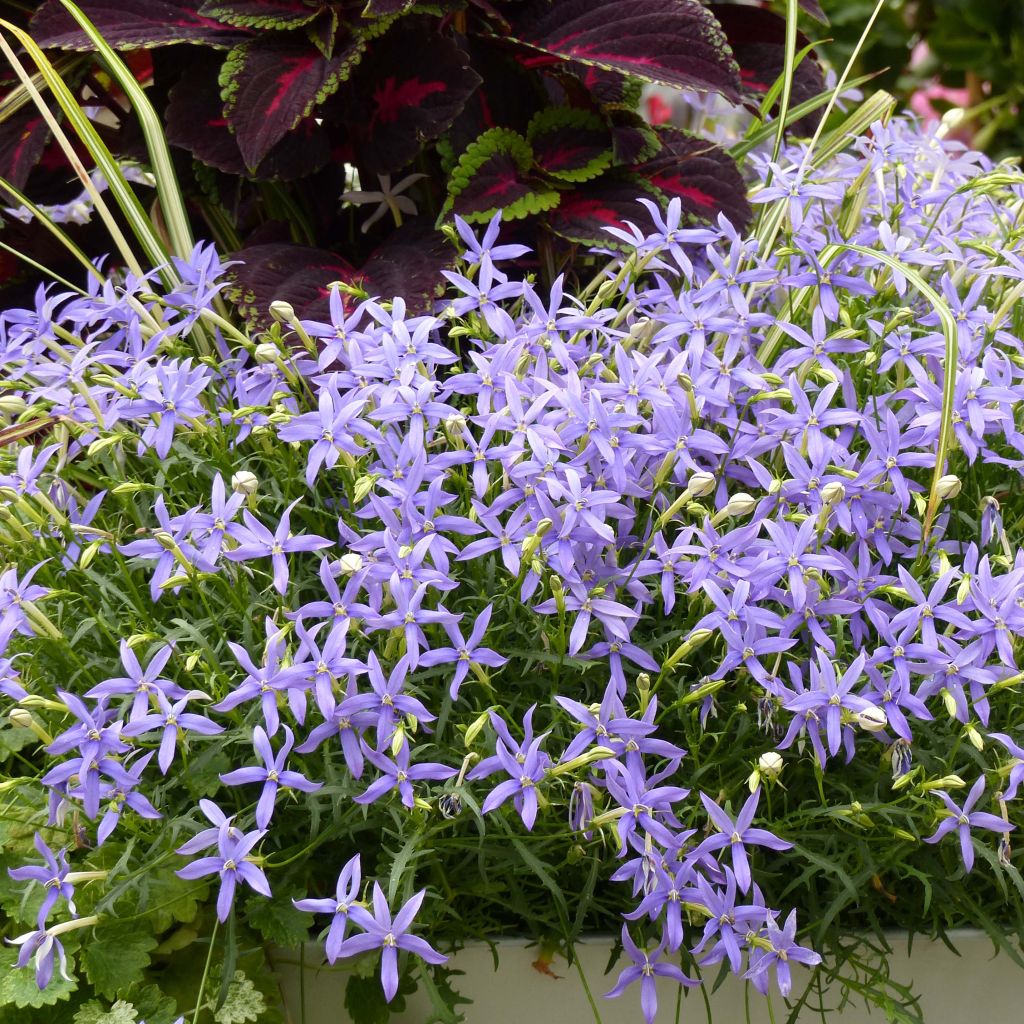

Laurentia ou Isotoma Beth's Blue minimottes
Isotoma axillaris Beths Blue - Rock Isotome
Isotoma axillaris Beth's Blue
Rock Isotome, Showy Isotoma, Australian Swamp Star
This item cannot be shipped to the selected country
Delivery charge from €5.90
More information
Schedule delivery date,
and select date in basket
This plant carries a 6 months recovery warranty
More information
We guarantee the quality of our plants for a full growing cycle, and will replace at our expense any plant that fails to recover under normal climatic and planting conditions.
From €5.90 for pickup delivery and €6.90 for home delivery
Express home delivery from €8.90.
Does this plant fit my garden?
Set up your Plantfit profile →
Description
Laurentia 'Beth's Blue', a variety of Isotoma axillaris, is a very recent American creation, with its lavender-purple flowering with blue reflections being particularly bright. This infinitely graceful perennial plant, often grown as an annual in our climates, forms a beautiful dome of finely cut foliage, covered with countless small pleasantly scented star-shaped flowers from summer to autumn. This variety is vigorous and heat resistant. It brings an extremely fine and delicate texture to all your compositions, whether in border plantings or in hanging baskets and containers on the terrace.
Originally from Australia, Solenopsis axillaris is a herbaceous perennial with woody base that grows very rapidly and is often cultivated as an annual due to its lack of hardiness, but also because of its long and abundant flowering. It belongs to the Campanulaceae family. It quickly forms a branched clump, naturally compact and nicely rounded, measuring 25 to 30cm (10 to 12in) in all directions. Its narrow, tapered, finely cut and toothed evergreen leaves are dark green. From May to October, and even until the first frosts, it produces countless small flowers with 5 pointed lobes arranged in a star shape. They are pleasantly scented. This plant is resistant to heat and drought, but will be more floriferous in fertile and moist soil.
Isotoma 'Beth's Blue' is an easy to grow and very floriferous plant, although it is little known to amateur gardeners. Decorative with its beautiful mauve-blue flowering, it can be used in flower beds among other plants, en masse in borders, and of course in pots, hanging baskets, and containers. It harmonizes well with a wide variety of other annual or perennial plants such as begonias, petunias, Bacopas, Nemesias, pink Gypsophila, or with pelargoniums, which it lightens the silhouette, for example. It is a lovely rock garden plant, which can be combined with Osteospermum, poppies, dahlias, or even with roses in orange, pink, or white tones.
Note: Please note that our young plug plants are professional products reserved for experienced gardeners: upon receipt, transplant and store them under cover (veranda, greenhouse, cold frame...) at a temperature above 14°C (57.2°F) for a few weeks before planting them outdoors once the risk of frost is definitively gone.
Report an error about the product description
Isotoma axillaris Beths Blue - Rock Isotome in pictures
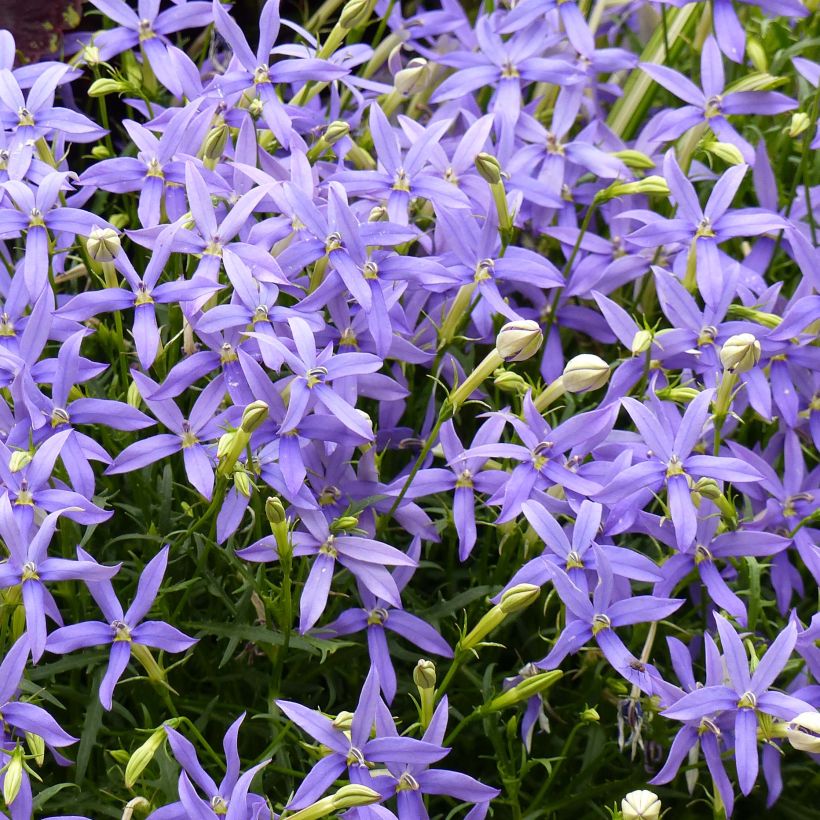

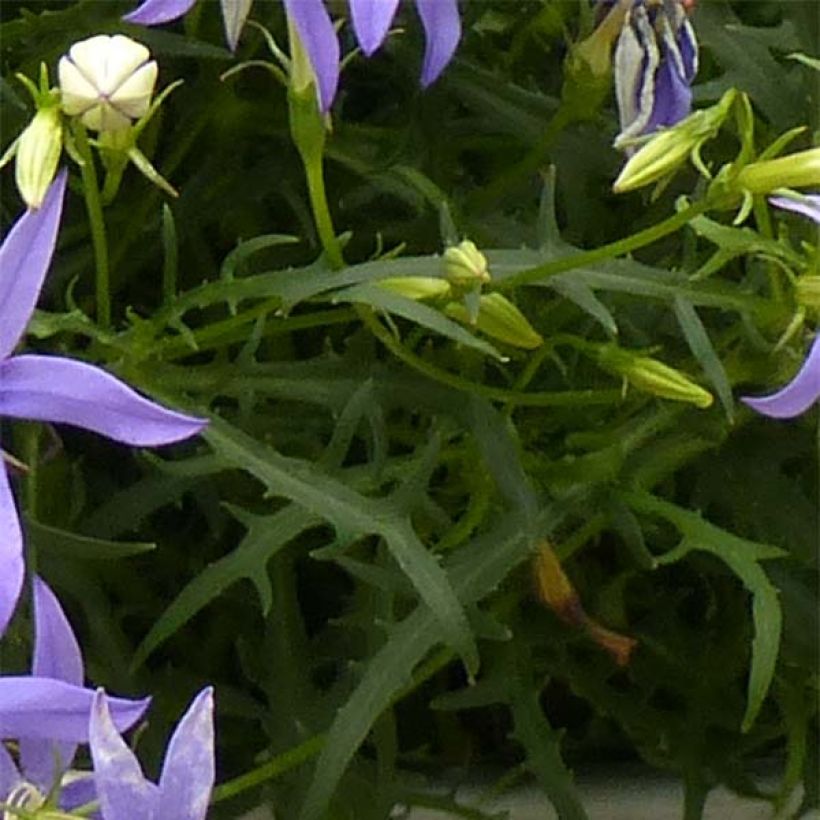

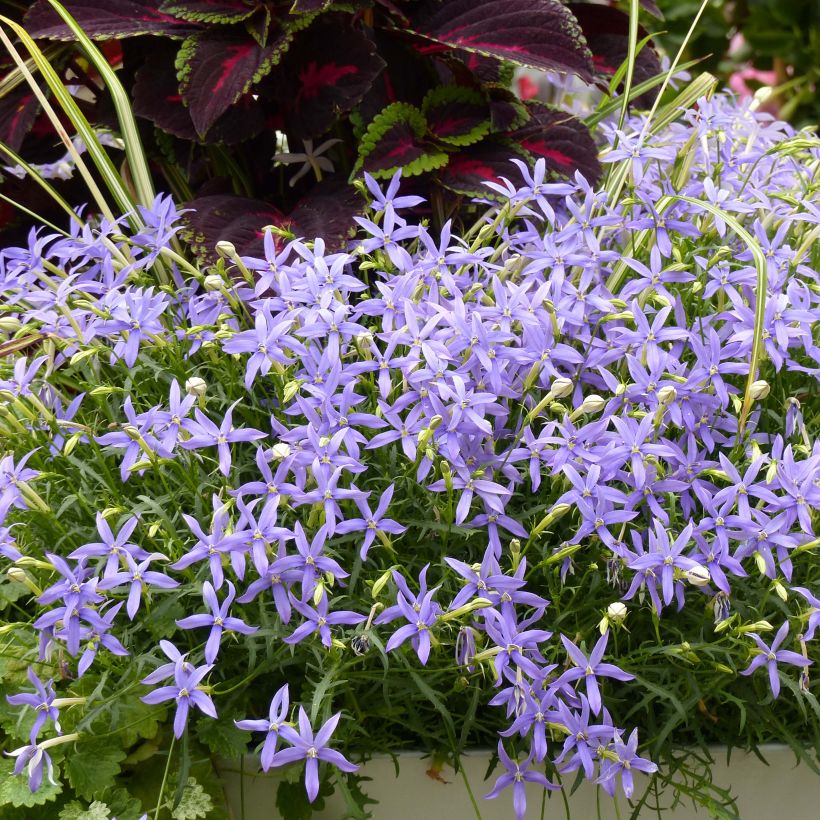

Flowering
Foliage
Plant habit
Botanical data
Isotoma
axillaris
Beth's Blue
Campanulaceae
Rock Isotome, Showy Isotoma, Australian Swamp Star
Cultivar or hybrid
Other Annuals A to Z
Planting and care
Laurentia requires very little maintenance and is content with a sunny exposure. Install it in the garden after the last frosts. Make sure the plant does not lack water and remove faded flowers from time to time. Water-efficient, it will be more floriferous and beautiful when planted in soil that remains slightly moist. In very mild climates, it shows itself to be perennial, but it is advisable to overwinter the plant if you want to keep it from one year to the next. Repot it and keep it in a veranda or cold greenhouse in winter. Attention: the sap of this plant can be irritating to certain individuals. Slugs and snails enjoy its foliage: be sure to protect your young plants in spring.
Planting period
Intended location
Care
-
, onOrder confirmed
Reply from on Promesse de fleurs
Plug plants - Annuals
Haven't found what you were looking for?
Hardiness is the lowest winter temperature a plant can endure without suffering serious damage or even dying. However, hardiness is affected by location (a sheltered area, such as a patio), protection (winter cover) and soil type (hardiness is improved by well-drained soil).

Photo Sharing Terms & Conditions
In order to encourage gardeners to interact and share their experiences, Promesse de fleurs offers various media enabling content to be uploaded onto its Site - in particular via the ‘Photo sharing’ module.
The User agrees to refrain from:
- Posting any content that is illegal, prejudicial, insulting, racist, inciteful to hatred, revisionist, contrary to public decency, that infringes on privacy or on the privacy rights of third parties, in particular the publicity rights of persons and goods, intellectual property rights, or the right to privacy.
- Submitting content on behalf of a third party;
- Impersonate the identity of a third party and/or publish any personal information about a third party;
In general, the User undertakes to refrain from any unethical behaviour.
All Content (in particular text, comments, files, images, photos, videos, creative works, etc.), which may be subject to property or intellectual property rights, image or other private rights, shall remain the property of the User, subject to the limited rights granted by the terms of the licence granted by Promesse de fleurs as stated below. Users are at liberty to publish or not to publish such Content on the Site, notably via the ‘Photo Sharing’ facility, and accept that this Content shall be made public and freely accessible, notably on the Internet.
Users further acknowledge, undertake to have ,and guarantee that they hold all necessary rights and permissions to publish such material on the Site, in particular with regard to the legislation in force pertaining to any privacy, property, intellectual property, image, or contractual rights, or rights of any other nature. By publishing such Content on the Site, Users acknowledge accepting full liability as publishers of the Content within the meaning of the law, and grant Promesse de fleurs, free of charge, an inclusive, worldwide licence for the said Content for the entire duration of its publication, including all reproduction, representation, up/downloading, displaying, performing, transmission, and storage rights.
Users also grant permission for their name to be linked to the Content and accept that this link may not always be made available.
By engaging in posting material, Users consent to their Content becoming automatically accessible on the Internet, in particular on other sites and/or blogs and/or web pages of the Promesse de fleurs site, including in particular social pages and the Promesse de fleurs catalogue.
Users may secure the removal of entrusted content free of charge by issuing a simple request via our contact form.
The flowering period indicated on our website applies to countries and regions located in USDA zone 8 (France, the United Kingdom, Ireland, the Netherlands, etc.)
It will vary according to where you live:
- In zones 9 to 10 (Italy, Spain, Greece, etc.), flowering will occur about 2 to 4 weeks earlier.
- In zones 6 to 7 (Germany, Poland, Slovenia, and lower mountainous regions), flowering will be delayed by 2 to 3 weeks.
- In zone 5 (Central Europe, Scandinavia), blooming will be delayed by 3 to 5 weeks.
In temperate climates, pruning of spring-flowering shrubs (forsythia, spireas, etc.) should be done just after flowering.
Pruning of summer-flowering shrubs (Indian Lilac, Perovskia, etc.) can be done in winter or spring.
In cold regions as well as with frost-sensitive plants, avoid pruning too early when severe frosts may still occur.
The planting period indicated on our website applies to countries and regions located in USDA zone 8 (France, United Kingdom, Ireland, Netherlands).
It will vary according to where you live:
- In Mediterranean zones (Marseille, Madrid, Milan, etc.), autumn and winter are the best planting periods.
- In continental zones (Strasbourg, Munich, Vienna, etc.), delay planting by 2 to 3 weeks in spring and bring it forward by 2 to 4 weeks in autumn.
- In mountainous regions (the Alps, Pyrenees, Carpathians, etc.), it is best to plant in late spring (May-June) or late summer (August-September).
The harvesting period indicated on our website applies to countries and regions in USDA zone 8 (France, England, Ireland, the Netherlands).
In colder areas (Scandinavia, Poland, Austria...) fruit and vegetable harvests are likely to be delayed by 3-4 weeks.
In warmer areas (Italy, Spain, Greece, etc.), harvesting will probably take place earlier, depending on weather conditions.
The sowing periods indicated on our website apply to countries and regions within USDA Zone 8 (France, UK, Ireland, Netherlands).
In colder areas (Scandinavia, Poland, Austria...), delay any outdoor sowing by 3-4 weeks, or sow under glass.
In warmer climes (Italy, Spain, Greece, etc.), bring outdoor sowing forward by a few weeks.


































